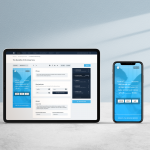
The internet is buzzing with discussions of which learner engagement strategies are effective. People also want to know of all of the student engagement strategies and whether there is one engagement strategy that is best. It makes sense because whether we are speaking about workplace engagement or learners at an educational institution, our goal is the same: learner engagement.
Yet, what is “engagement” exactly? You might be surprised to find that there is no single definition of this term. So, we will agree on one for our purposes here.
A Working Definition of Engagement
To make sure we are on the same page, this article’s working definition of “learner engagement” or “student engagement” is adapted from the definition in The Glossary of Education Reform: Engagement refers to how much the learner/student is involved and motivated in the learning atmosphere and tasks as measured by their attention, curiosity, interest, optimism, and passion.
Thus, it seems obvious that understanding the learner is a core component of successful engagement.
Step 1: Understanding the Learner
In their article, “Student engagement in the educational interface: understanding the mechanisms of student success” (published in Higher Education Research and Development), researchers Ella Kahu and Karen Nelson discuss how to increase student engagement. The article presents some reworking of Kahu’s earlier research to arrive at a more up-to-date methodology for engaging students in learning.
Sociocultural Context
The authors suggest that the learner has a great deal to do with the success or failure of the engagement. In other words, the technology of learning (learning apps, online vs. face-to-face, digital vs. “old school”, etc.) cannot be evaluated in a vacuum. The learner must be included.
Kahu and Nelson point to four main points in this area.
Self-efficacy: Can I succeed?
The tasks may be amazingly easy and simple. Yet, if the learner believes that they can’t do it, they are correct—they can’t…and they won’t. The opposite is just as true, and we see it all the time. Against the odds, people succeed because they believe they can.

Emotions: Which feelings are arising?
Strange as it may seem, learning situations are not neutral. It is not a matter of “give the task, learners do the task, done”. There are all kinds of positive and negative emotions hidden in learning, whether academic or training. For mature learners, for example, it might be connected to good or bad experiences they had while in school or college. With younger learners, it might relate things such as their lack of experience in doing such work or how well this task syncs with their personal learning style.
Belonging: How well do I fit in?
Learners are more engaged when they feel that they are connected to the organization, staff, and other learners. Those who feel like outcasts will be less motivated to learn and may even leave the education or training program.
Wellbeing: What’s my stress level?
In this case, stress is caused by the interaction of personal and institutional factors. The student may be having a great day (high wellbeing) but be brought down by a teacher’s criticism. Alternatively, the learner might be well down in the dumps but have their mood improved by a task that they succeed at.
And the main takeaway is…
No matter what other bells and whistles are happening, learner engagement is maximized when the student:
-believes they can succeed at the task experiences positive emotions while on task (or is supported well in dealing with any negative emotions)
-feels that they are a valued part of the class
-has a low stress level (or gets help in coping with a higher stress level)
Step 2: What does this mean for educators and trainers?
To put it plainly, it means you need to get to know your learners. You cannot hope to create effective academic or training courses in a studentless-vacuum.
Perhaps you are thinking, “Ah, easy for her to say. She has no idea how much time that takes. Just planning my lessons/training and preparing their content eats up most of my time, not to mention the other bureaucratic ‘enjoyments’ of teaching/training.”
Ah, but I do. I have been involved in the teaching and training of people from ages 8-65 for over 15 years. I have worked in schools, workplaces, colleges and universities, and private homes. I am very familiar with how much time things take…especially when done well.
I have learned from field experience, however, that “best” is a totally relative idea. I have come into class with what I thought was an AMAZING lesson, only to have it fall flat on its face. Then, there were “meh” lessons (in my opinion) which were huge hits. The consistent explanation was how well that lesson took into account the sociocultural points discussed above.
Academic educators: getting to know your students
Those in academia often have “get to know you” opportunities woven into the academic calendar such as teacher-student meetings, parent-student-teacher conferences, and open days at school. Although things are moving in a more virtual direction, meetings and conferences can still be organized.
Teachers include “icebreakers” in the first class or two. These activities are excellent ways to meet your students and have fun at the same time. There are plenty of effective suggestions online for the age group of your learners.

Another idea is dedicating a few minutes before class on a one-to-one basis to find out who your students are as people. At the moment, for example, I am teaching via ZOOM. I start the meeting 15 minutes early. Usually, a few students enter as soon as they see me online. I choose one student and ask a non-threatening question as a conversation starter. Over the course of our lessons, I have learned so much about my students even though I have never met them physically…and for most of the Zoom lessons I am speaking to black rectangles because their cameras are turned off.
Workplace educators: getting to know your employees
Since training is often secondary to the “main business” of the day, “meet and greet” opportunities are usually not built-in to the schedule. However, as a critical component of your employee engagement strategy, you are going to have to get them built in.
Show that it is important
Your organization should offer employee engagement training to your managers and anyone else who is involved in workplace training. A module of that program should teach the policy that getting to know the workers as individual people is a big part of creating engaged employees. Once trainers see that this concept is valued by the organization, they tend to make time to do what is necessary.
Ideas for how to get to know your employees
1. Staff engagement: Learn about individual employees by showing up a little early to staff meetings. Each time choose someone else to chat with. Use non-threatening conversation starters. The first section of this article has some good suggestions.
2. Team engagement: While you can use the idea in #1, team meetings lend themselves to another idea. Since teams work together on work projects, they may often train together, too. So, use team building exercises. In addition to finding out about your employees as individuals and team members, these exercises also help to strengthen their bonds, helping everyone feel they belong. Get some ideas for physical/virtual team building activities at Snacknation and Forbes.
3. One-on-one meetings: Carve out two, ½ hour time slots in your week, one in the morning and one in the afternoon. Neither should be right at the start or end of the day. Neither should be on the first or the last day of the week. Use these time slots to meet your employees. Try to meet away from the office. For example, take a stroll outside or invite your worker for tea/coffee at a nearby cafe or coffee shop. Chat about family, hobbies, likes/dislikes, common interests, etc. Make it casual and fun.
TOP TIP
Whenever you learn something about an employee, write it down. You can use a digital organizer or an old-school method. The point is to have this information at hand when preparing training material.
Whether you are looking at strategies to improve employee engagement or trying to figure out how to engage students…
the big idea of this article remains the same: getting to know your learners on a non-creepy, personal level is a critical component in the success or failure of your educational or training program.

Ready to start your training program? EdApp is a free platform that can power your education and training, all while engaging your audience through microlearning. Click here to get started.
Sources
https://snacknation.com/blog/virtual-team-building/
https://www.edglossary.org/student-engagement/
https://www.forbes.com/sites/forbeshumanresourcescouncil/2019/12/30/12-surprisingly-effective-yet-unconventional-team-building-exercises/#453e3e9153aa
https://www.researchgate.net/publication/318123542_Student_engagement_in_the_educational_interface_understanding_the_mechanisms_of_student_success









[…] Meet Jill Watson, Virtual Teaching Assistant […]
[…] Meet Jill Watson, Virtual Teaching Assistant […]
[…] https://www.youtube.com/watch?v=LgkgaXl8j_w https://news.elearninginside.com/meet-jill-watson-virtual-teaching-assistant/ […]
[…] Meet Jill Watson, Virtual Teaching Assistant […]
[…] Meet Jill Watson, Virtual Teaching Assistant […]